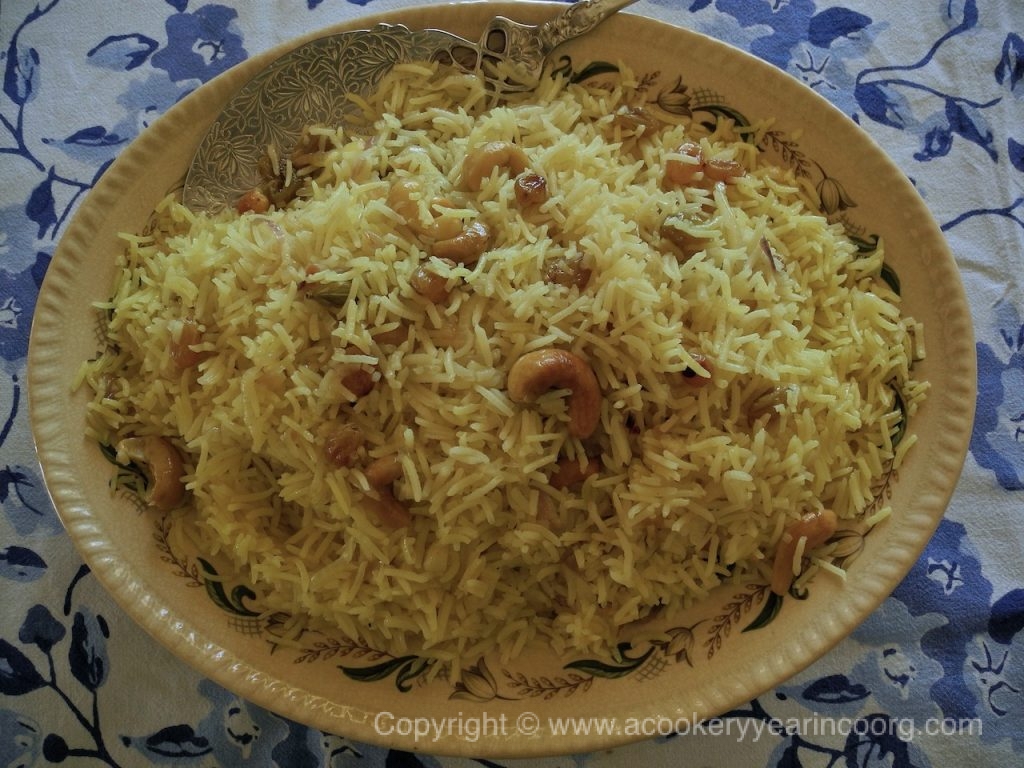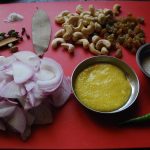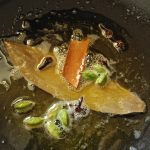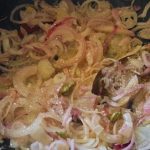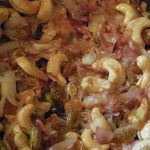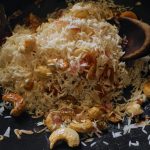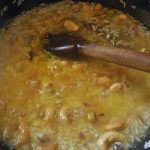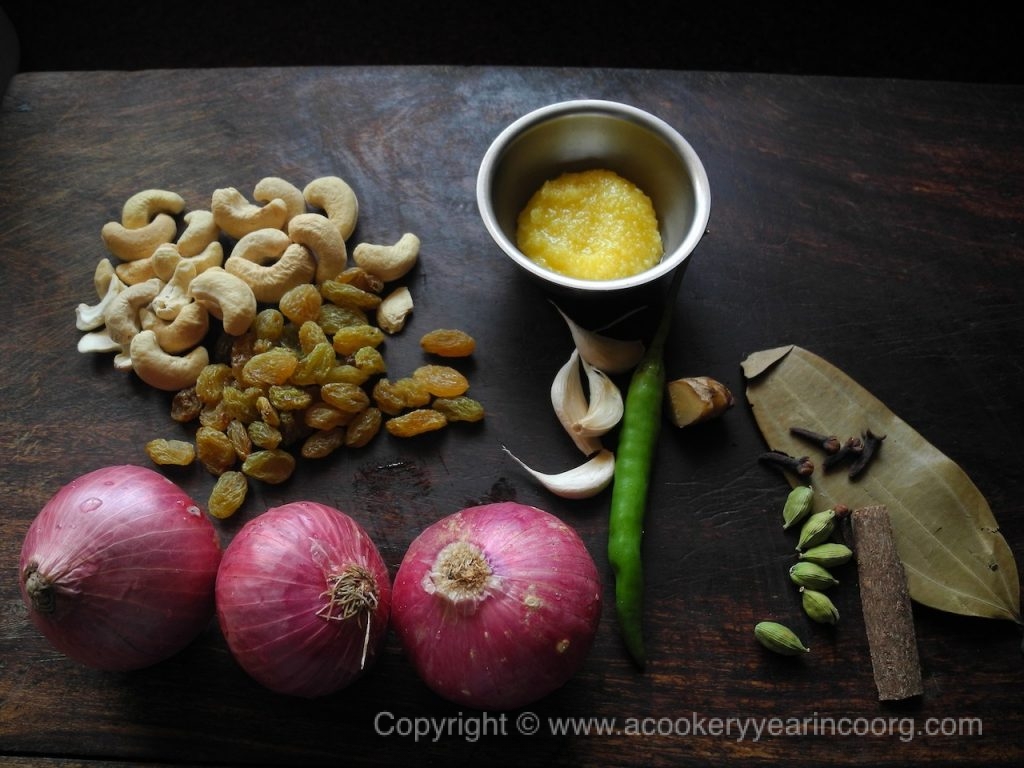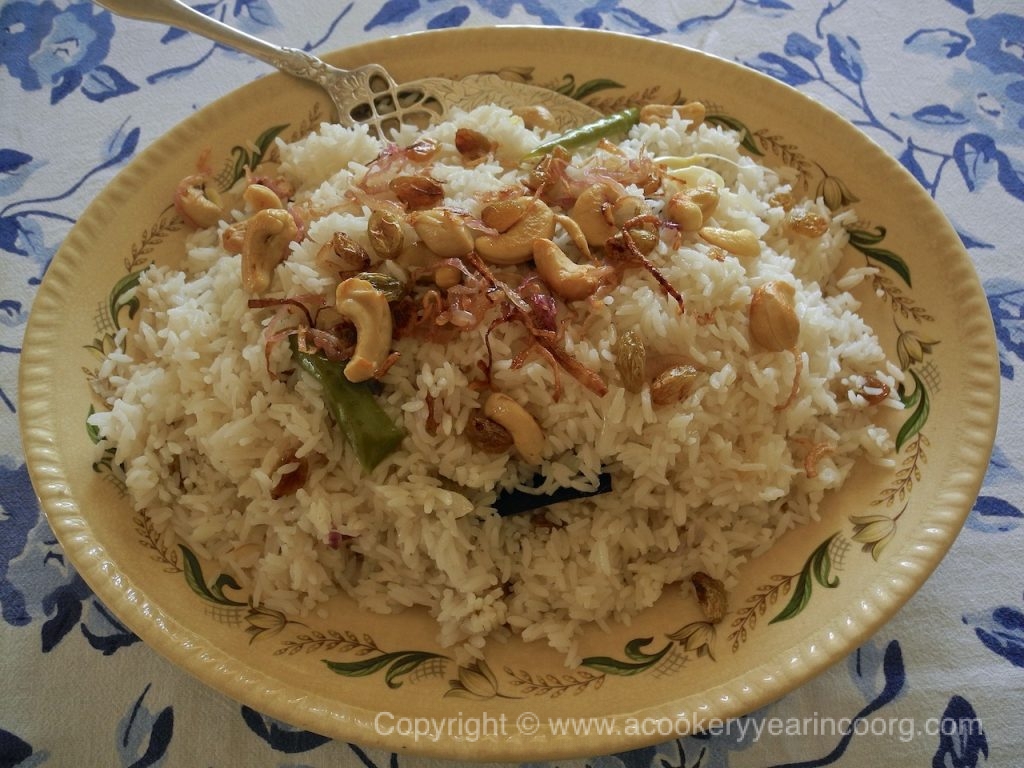For special occasions, neyi kuul, or ghee rice, is a favoured dish at the Kodava table.
What’s not to love about soft white rice, cooked in generous quantities of ghee with onions and spices, and garnished with cashew nuts and raisins? And yet grandmother seems to have had her own take on “ghee rice” for her table.
There was no garlic, or ginger or green chilli in her version. Her ghee rice was scented with whole spices, subtly sweetened with caramelized onions, and studded with raisins and cashew nuts. It also wasn’t white, but tinged with a heavenly pale gold, and made just a little earthy by the addition of a hint of turmeric.
I always wonder about her culinary influences. Just as neyi kuul echoes the Mapilla rice dish of neyichoru, this touch of sugar in the rice was perhaps influenced by a Parsi neighbour in Mercara – a cue taken from the rice cooked with sugar caramelized onions, and traditionally made to accompany a dhansak. We’ll never know for certain, but I do know it made a dish beloved by generations of her family. We knew this as pann kuul or “fruit rice”.
This is the ghee rice I still make. With that unusual touch of sweetness, it serves as a perfect foil for spicy curries.
Kuru curry and pann kuul is still one of my favourite combinations. My mother recalls how, as children, she and her sisters loved to eat this rice with no accompaniment at all! And I still do that too. 🙂
Here is her recipe, followed by a more traditional one, courtesy CoorgRecipes.com.
Try it both ways!
Traditional Pann Kuul
Ghee rice, Grandma’s way
- 1 cup rice (I like basmati for this dish) washed, and drained
- 3-4 tbsp melted ghee is more than enough, but feel free to use more for what was once a luxurious indulgence of a dish!
- 1 cup finely sliced onions
- 1 –2 whole green chillis (optional, but I like to add some)
- 4-5 cloves
- 4-5 whole green cardamom pods
- 1 cassia leaf
- 2″ stick of cassia or cinnamon
- 1 1/2 tbsp sugar
- 1/4 tsp turmeric powder or 1/2 tsp ground fresh turmeric if available
- Salt to taste
- Rasins and cashew nuts as you please, fried in ghee
- 1 1/2 cups hot water
Heat the ghee in a deep sided pan, then drop in the cassia leaf, followed by the cardamom, cassia stick and cloves.
Stir for a minute until aromatic, then add the whole green chilli and the onions. The green chilli is optional, but it does add a subtle savoury note which is rather nice, especially to the adult palate.
Pierce the chilli so it doesn’t explode in the pan!
Sprinkle on the sugar and cook on med-low heat until the onions are beginning to caramelize and almost melting into nothingness.
Add the raisins and cashew nuts. Save a few for garnish if you like. Add the turmeric, salt and hot water, and bring the dish to a gentle boil. Stir, cover, reduce the heat to low , and let it cook undisturbed for 15- 18 minutes or until done.
Cool slightly, then turn out onto a platter and garnish with the reserved nuts and raisins. Serve up Pann kuul for the young, and the young at heart. 🙂
Traditional Neyi Kuul/Ghee Rice
(Recipe courtesy CoorgRecipes.com)
Ingredients:
- Rice – 1 cup (fine quality, Jeera Sanna or Basumathi)
- Ghee – 1 ½ cups
- Onions – 3
- Ginger – 1 small piece
- Green Chillies – 2
- Salt – ½ Tea spoon ( or to taste )
- Cardamom – 5 pods
- Cinnamon – 1 piece
- Cloves – 4
- Raisins – 15
- Cashew nuts – 12
- Garlic – 4 cloves
- Water – 1 ¼ cups*
Method:
Wash rice well and set aside. Pour ghee into a broad mouthed vessel and keep it on the fire. When the ghee is hot add chopped onions, garlic, ginger, green chillies, cardamom, cinnamon and cloves. Fry till they turn light brown in colour. Add the washed rice and stir for a little while. Add salt, water and stir. Keep it covered. When it begins to boil, stir again and reduce the heat. When the rice is partially cooked add to it the raisins and cashew nuts fried in a little ghee. The rice will be cooked in about ½ an hour. When it is done, stir again and serve hot.
*Note: This quantity of water may need adjusting, particularly if the rice is not soaked beforehand.

